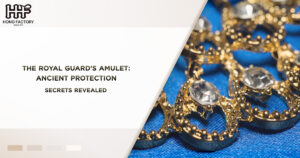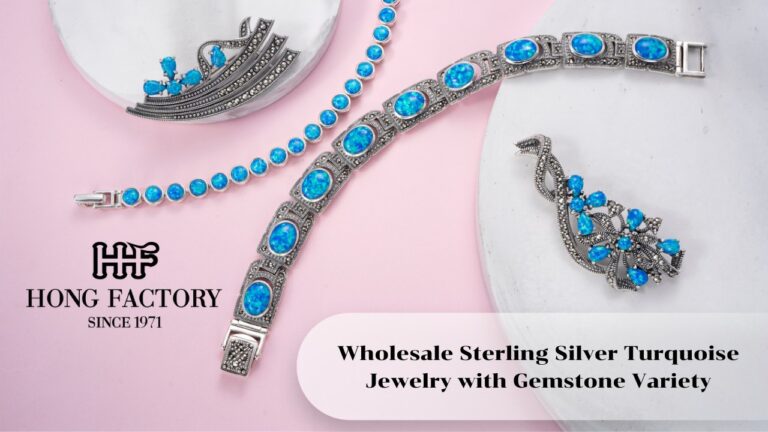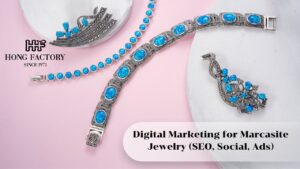
Healing stones and crystals have been used for centuries in traditional medicine and spiritual practices. They are lauded by many for their supposed ability to balance energy, promote well-being, and even assist in physical healing. However, the integration of these stones into modern healthcare settings has sparked debates that question their role in evidence-based medicine. A particularly intriguing case is the story of a hospital ward that banned a so-called “lucky” stone. While this stone had no verifiable history of healing, its growing popularity among patients and staff raised concerns about its implications in a clinical environment.
This article dives deep into the intersection of traditional healing stones and modern medicine, exploring the science, skepticism, and cultural impact of crystal therapy in healthcare. We’ll discuss why this mysterious “lucky” stone was banned, the potential medical implications of healing stones, and whether they have a place in clinical settings.
The Allure of Healing Stones in Traditional Medicine

A Brief History of Healing Stones
Healing stones have been revered in various cultures for millennia. Ancient Egyptians, for instance, used lapis lazuli and turquoise for their supposed protective and healing properties. Similarly, Indian Ayurveda and traditional Chinese medicine utilize crystals to balance energy centers (chakras) and promote harmony within the body.
While healing stones are generally seen as part of alternative medicine, they have garnered a strong following in the modern wellness industry. Proponents claim that stones like amethyst, rose quartz, and clear quartz can alleviate stress, improve mood, and even aid physical recovery. The key to their appeal lies in their ability to bridge the gap between spiritual well-being and physical health, creating a holistic approach to healing.
The Rise of Health Jewelry and Crystal Therapy
In recent years, health jewelry featuring healing stones has surged in popularity. Bracelets, necklaces, and even water bottles infused with crystals have become symbols of wellness. Crystal therapy—where stones are placed on or around the body—is touted as a complementary treatment for various ailments, from anxiety to chronic pain.
Despite their popularity, healing stones remain controversial in scientific circles due to the lack of empirical evidence supporting their efficacy. This tension between traditional practices and modern medicine sets the stage for fascinating debates, like the one that unfolded in the hospital ward that banned the “lucky” stone.
The Curious Case of the “Lucky” Stone – A Hospital Ward’s Controversial Ban
The story begins in a bustling urban hospital, where a peculiar trend took root among patients and staff. A particular “lucky” stone a smooth, iridescent crystal with no traceable historical or cultural significance became a sensation. Patients claimed it brought them comfort, improved their recovery, and even had a calming effect during stressful procedures. Some staff members also began carrying the stone, citing its “positive energy” and symbolic value.
However, the growing presence of this stone in the hospital ward raised eyebrows among administrators and medical professionals. Concerns about its influence on clinical decision-making and patient care led to a controversial decision : the stone was banned.
Why Ban a “Lucky” Stone?
The hospital administration cited several reasons for the ban :
- Lack of Scientific Evidence :
The stone’s purported healing properties had no scientific basis, which conflicted with the hospital’s commitment to evidence-based medicine.
- Risk of Psychological Dependence :
Some patients seemed to rely on the stone as a primary source of hope, potentially undermining trust in proven medical treatments.
- Infection Control Issues :
Sharing or carrying the stone between multiple individuals posed potential hygiene risks, especially in a clinical setting where infection control is paramount.
- Ethical Concerns :
The stone’s growing influence raised questions about the role of placebo effects and whether healthcare professionals should endorse unproven remedies.
While the ban was met with mixed reactions, it highlighted the broader issue of how alternative practices like crystal therapy fit into modern medicine.
The Science (and Skepticism) Behind Healing Stones
What Does Modern Medicine Say About Healing Stones?
The scientific community remains largely skeptical about the efficacy of healing stones. Most claims surrounding their benefits are attributed to placebo effects where a person experiences real improvements in their condition due to their belief in the treatment, rather than the treatment itself.
From a scientific perspective, healing stones lack the mechanisms to directly influence physical health. They do not emit measurable energy fields or vibrations that could interact with the body in a therapeutic way. Instead, their effects are often explained through psychological and emotional pathways, such as:
- Stress Reduction : Holding or focusing on a stone may create a meditative state, which can lower stress and improve overall well-being.
- Symbolic Meaning : The belief that a stone has special properties can enhance a person’s sense of control and optimism, which are known to benefit mental health.
The Placebo Effect – A Double-Edged Sword
The placebo effect is a powerful phenomenon in medicine, capable of producing genuine symptom relief. While this might seem like a justification for using healing stones, it raises ethical questions. Should healthcare providers encourage belief in unproven remedies, even if they produce positive outcomes? Or does this undermine the integrity of evidence-based medicine?
The Medical Implications of Crystal Therapy
Can Healing Stones Complement Modern Treatments?
Despite the lack of scientific backing, some experts argue that healing stones can play a complementary role in patient care. For example :
- Emotional Support : The tactile and aesthetic qualities of crystals may provide comfort to patients facing anxiety or chronic illness.
- Mindfulness and Relaxation : Incorporating stones into meditation or relaxation exercises can enhance their effectiveness.
- Patient Autonomy : Allowing patients to explore alternative therapies can foster a sense of empowerment and involvement in their healing journey.
However, these benefits must be weighed against the risks of promoting unproven remedies, especially in clinical settings where trust in medical science is crucial.
The Risks of Relying on Healing Stones
The use of healing stones in healthcare settings is not without risks. These include :
- Delaying Proper Treatment : Patients may prioritize alternative remedies over evidence-based treatments, potentially worsening their condition.
- False Hope : Belief in the healing power of stones can lead to unrealistic expectations, which may result in disappointment or distrust in medicine.
- Ethical Dilemmas for Healthcare Providers : Balancing respect for cultural beliefs with the responsibility to promote scientifically validated treatments can be challenging.
Striking a Balance – Traditional Practices and Modern Medicine
Lessons from the “Lucky” Stone Ban
The banning of the “lucky” stone in the hospital ward serves as a microcosm of the broader debate surrounding alternative therapies in modern medicine. It underscores the need for a balanced approach that respects cultural diversity and personal beliefs while maintaining the integrity of evidence-based healthcare.
Bridging the Gap – Possibilities for Integration
Rather than dismissing healing stones outright, healthcare providers might consider ways to integrate them into patient care responsibly. This could involve :
- Open Dialogue : Encouraging patients to discuss their use of alternative therapies and addressing any misconceptions.
- Complementary Practices : Incorporating mindfulness techniques, like meditation with crystals, as part of holistic care plans.
- Education and Awareness : Providing clear information about the limitations and benefits of healing stones, empowering patients to make informed decisions.
Conclusion
The intersection of traditional healing stones and modern medicine is a fascinating and complex topic. While the scientific evidence for their efficacy remains limited, the psychological and emotional benefits they offer cannot be ignored. The story of the “lucky” stone ban highlights the challenges and opportunities of integrating alternative practices into clinical settings.
Ultimately, the future of healing stones in medicine will depend on continued research, open-minded dialogue, and a patient-centered approach. By respecting diverse beliefs while upholding the principles of science, healthcare providers can navigate this delicate balance and provide holistic care that meets the needs of all patients.
Whether you view healing stones as powerful tools or harmless trinkets, their enduring appeal speaks to a universal desire for hope, comfort, and connection in the journey toward health and well-being.















